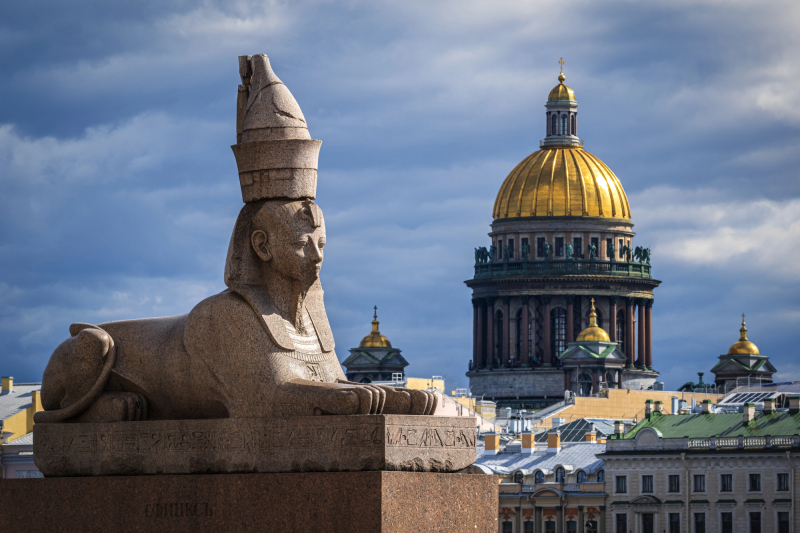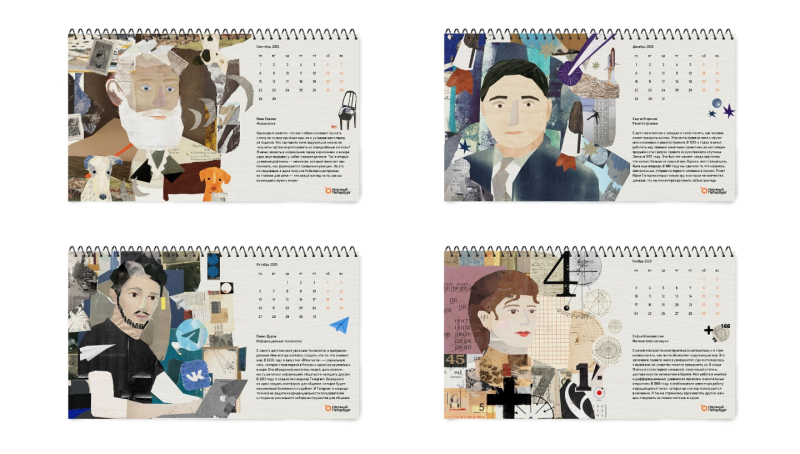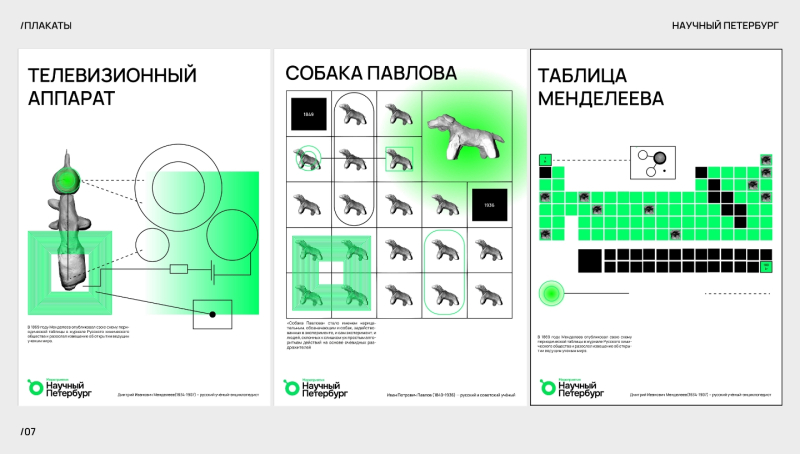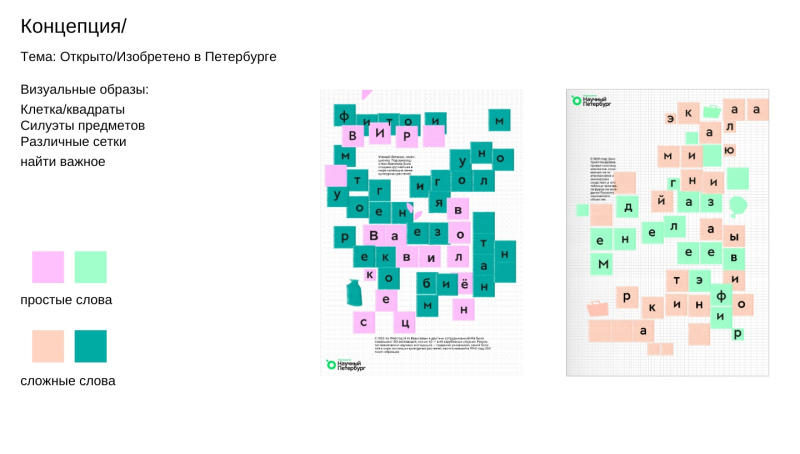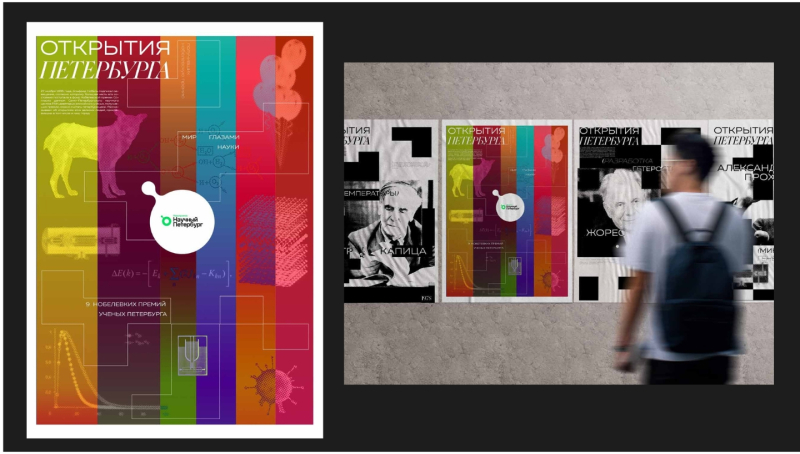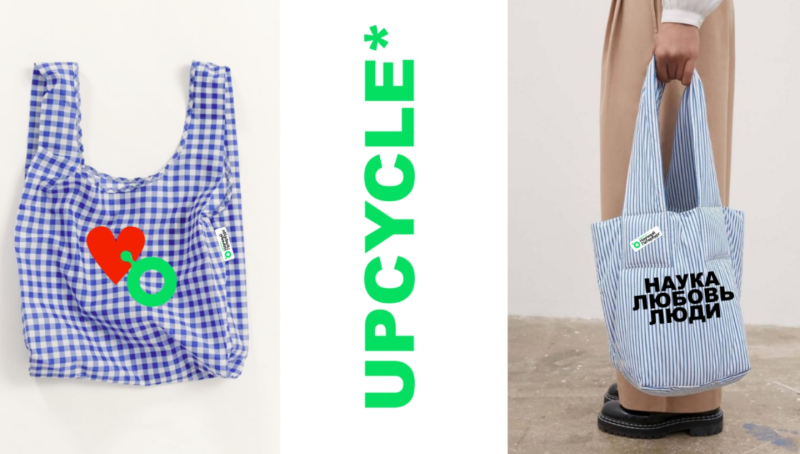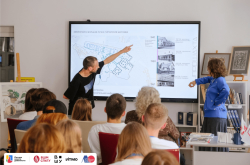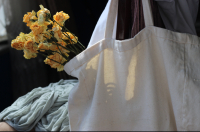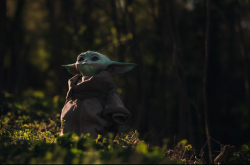The event’s mission was to promote local science and collaborate with designers and artists to create new city symbols – on par with the sphinxes, St. Isaac's Cathedral, and poet and essayist Joseph Brodsky – that would be available as souvenirs in bookstores and other iconic venues across St. Petersburg.
At the school, participants learned more about St. Petersburg scientists and worked on their designs with the help of mentors. All projects were presented within the following categories:
-
Ivan Pavlov;
-
Engineers of St. Petersburg;
-
Scientific St. Petersburg;
-
Discoveries and inventions of St. Petersburg;
-
Nikolai Vavilov;
-
Cradle of Physics / Physicists of St. Petersburg;
-
IT in St. Petersburg / Programmers of St. Petersburg;
-
Nobel Laureates.
Among the developed projects were merch with handwritten quotes by Nobel winners from St. Petersburg, a Rubik's cube with the periodic table, a scientific alphabet, and a series of vibrant posters inspired by Ivan Pavlov, Nikolai Vavilov, Sofya Kovalevskaya, Élie Metchnikoff, and other science icons of St. Petersburg.
The competition was open to full-aged students of universities, colleges, and technical institutions, as well as graduates (the class of 2021 and younger). The organizers received 33 applications from young designers and artists in St. Petersburg, Rostov-on-Don, and Yekaterinburg, 20 of which succeeded through the selection process, but only eight advanced to the finals.
“As part of our project Scientific St. Petersburg, we sought to tell the tale of St. Petersburg from a scientific point of view, and with the support from St. Petersburg's Foundation for Support of Innovations and Youth Initiatives, which runs the federal contest for young designers Youth Design, we were able to make it happen. Our science communicators created mood boards for each category, and young designers worked on their projects under the guidance of our mentors. The participants attempted to see souvenirs not just as gifts, but also as educational tools that can tell about celebrated inventors and their discoveries and inspire a new generation of scientists and engineers,” says Valeriia Prokuratova, the school’s curator and a lead PR expert at ITMO’s Center for Science Communication.
Scientific St. Petersburg is a popular science project about the city where science plays a key role. The event is organized by ITMO’s Center for Science Communication in partnership with the Russian Ministry of Science and Higher Education.
Moving science
Polina Dyubkova, a graduate of Stieglitz State Academy of Art and Design, won the competition with her designs for the Scientific St. Petersburg’s souvenir collection, namely logos referring to St. Petersburg scientists (Ivan Pavlov, Vladimir Kotelnikov, and Nikolai Vavilov), as well as posters, tote bags, and badges. Additionally, she also proposed a chemical Rubik’s cube and a series of home gardening kits, with references to Nikolai Vavilov.
The project is aimed at the city’s tourists and residents who are interested in science but aren’t involved in it in their everyday life.
“With many seeing science as a private, distant community, I decided to develop a series of posters and souvenirs that would inform residents and tourists alike about our scientists and perhaps spark an interest in kids and teenagers. The key element in the project is a combination of vivid and simple drawings with real-life photographs that are easy to interpret and thus draw attention to their content,” notes Polina Dyubkova.
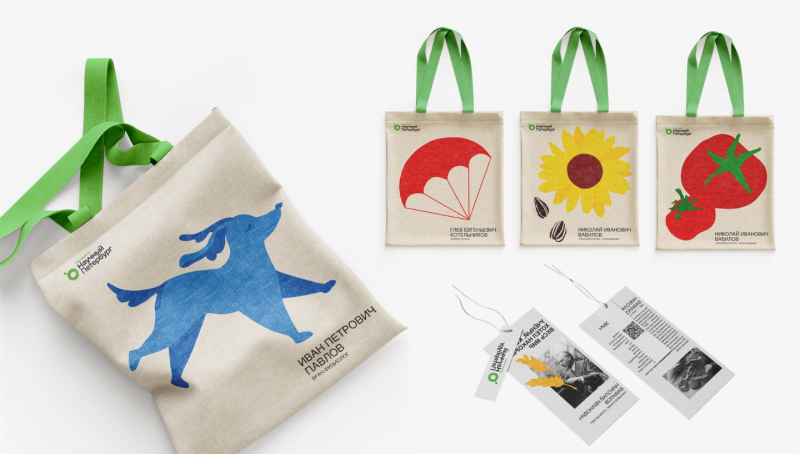
The project by Polina Dyubkova. Photo by the organizers
Scientific alphabet
Maria Lazarenko, a graduate of the Academy of Architecture and Arts of the Southern Federal University, became the prize-winner in the Creativity category for developing a souvenir on a novel medium rarely found in souvenir shops.
Because language and letters unite all sciences, Maria came up with her own scientific alphabet – a city-inspired typography for the project’s eight categories, from Ivan Pavlov to Nobel Laureates. The design may be used in all souvenir products..
She also developed alphabet-based educational cards with letters for different fields and tear-off calendars with events related to science in St. Petersburg.
“This is my second time taking part in the Youth Design contest. Last year, I presented merch for VTB’s charity foundation, which was ranked third best. I loved that the contest offered tasks from real-world customers, thus letting us, aspiring designers, gain experience working with major companies and organizations. In the future, I’d like to release my own line of souvenirs that would include clothing, unusual stationery, and sticker packs,” stresses Maria Lazarenko.
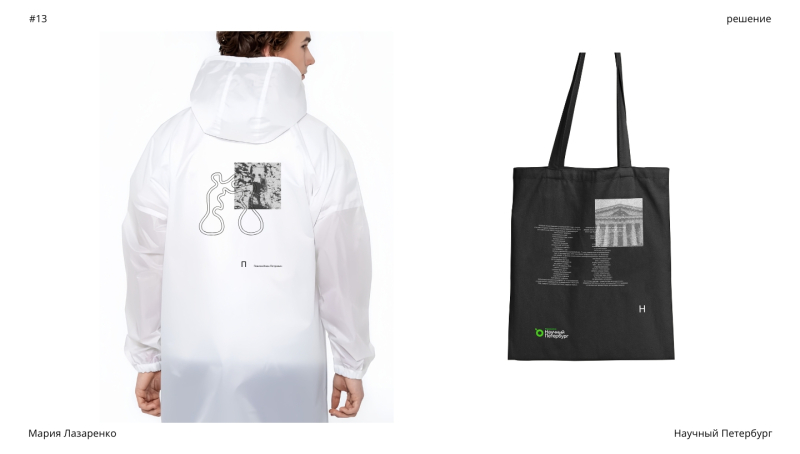
The project by Maria Lazarenko. Photo by the organizers
The organizers will keep in touch with winners and prize winners; they will also be invited to adapt their designs for different media. The project and its results have piqued the partners' attention, meaning the initiative will carry on, according to the Center for Science Communication. The winning projects will be displayed at Stieglitz State Academy of Art and Design in December.
